Maori Culture Tourism offers a unique and enriching experience for travelers in New Zealand. With SIXT.VN, planning your cultural journey is seamless, providing convenient travel solutions and unforgettable cultural immersion in Aotearoa. Discover the wonders of Maori heritage sites and cultural festivals through curated travel advice.
Are you planning a trip to New Zealand and eager to experience the rich Maori culture? New Zealand offers unparalleled access to indigenous experiences. Let SIXT.VN be your guide to exploring this vibrant heritage, ensuring an enriching and respectful journey. Start your Maori culture adventure today with our tourism consultation.
1. Where is the Best Place to Experience Māori Culture in New Zealand?
The best places to experience Maori culture in New Zealand are primarily located on the North Island, but the South Island also provides distinct experiences. You’ll encounter te ao Māori (Māori culture) almost immediately upon arrival. For example, Auckland’s International Airport greets visitors with “Nau mai, haere mai” (“welcome”) as they enter through a traditional waharoa (carved Māori gateway). The North Island, home to 85% of New Zealand’s Maori population, has many opportunities to explore the rich history.
North Island’s Cultural Hubs
Regions such as the Bay of Plenty, Hawke’s Bay, and Northland are home to a substantial Indigenous population, with Maori making up around one-third of the residents. Gisborne Tairāwhiti also stands out as a region where Maori constitute the majority, making it a prime location for cultural immersion. According to Statistics New Zealand, the North Island has a significantly higher Maori population, creating an enriched setting for cultural experiences.
Waitangi Treaty Grounds
Located in Northland, the Waitangi Treaty Grounds hold immense historical significance as the site where Maori chiefs and British representatives signed the Treaty of Waitangi in 1840. This treaty established New Zealand as a bicultural nation. Visiting this site offers a deep dive into the foundational moments of the country.
Rotorua
South of Auckland, Rotorua is renowned for its geothermal activity and abundant Indigenous encounters. This town is home to Whakarewarewa, where the Tūhourangi Ngāti Wāhiao people have welcomed visitors for over 200 years, sharing their traditions and way of life. Rotorua has solidified its place as a center for Maori cultural tourism.
South Island’s Unique Cultural Offerings
Even with a smaller Maori population, the South Island presents unique opportunities to connect with Maori culture. Known as Te Wapiounamu (“The Greenstone Waters”), it is the primary source of pounamu (jade or greenstone), used for decorative objects, jewelry, tools, and weapons. Engaging in a greenstone-carving workshop or taking a guided tour to find pounamu with a local Maori guide in Hokitika offers hands-on cultural immersion.
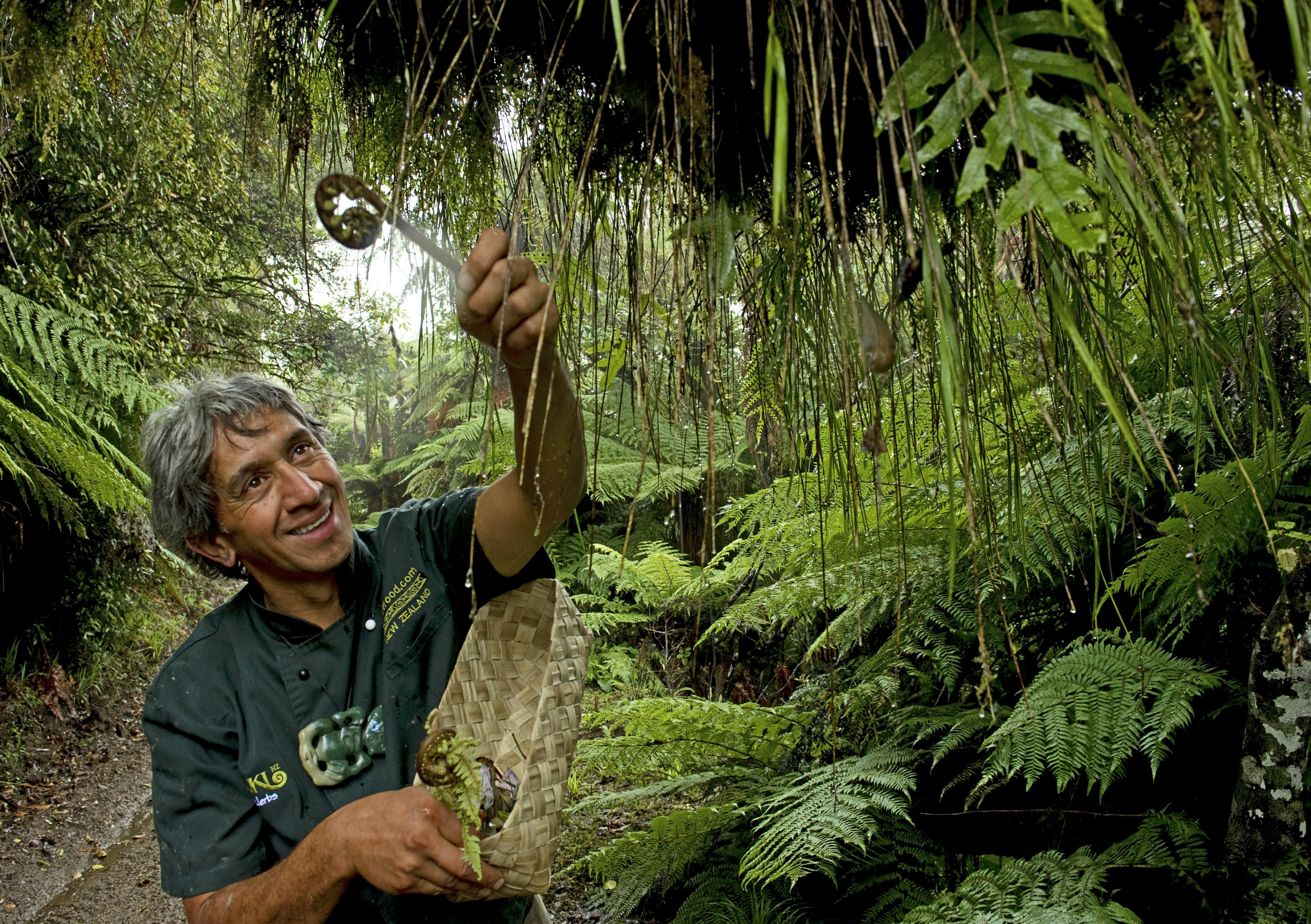 A Maori guide showing local plants used by the Maori people in New Zealand
A Maori guide showing local plants used by the Maori people in New Zealand
2. Where Can I See a Māori Cultural Show?
Across New Zealand, you can find cultural performances that showcase kapa haka (performing arts), with options available for various budgets. These shows, most commonly found on the North Island, feature haka, waiata (songs), waiata-ā-ringa (action songs), and moteatea (chants), which tell stories of ancestral narratives. The Tourism New Zealand website is a reliable resource for finding performance schedules and locations.
Key Venues for Cultural Shows
Several locations offer cultural shows as part of their entry passes. The Waitangi Treaty Grounds and the Auckland Museum provide short performances included with adult entry tickets, priced at NZ$60 and NZ$35, respectively. These performances offer a glimpse into Maori traditions and history.
Manea Footprints of Kupe
For a more historically inclined experience, the multi-sensory show at Manea Footprints of Kupe on Northland’s Hokianga Harbour beautifully explains local narratives about the discovery of Aotearoa by Polynesian explorers. Tickets for this show cost NZ$65, providing an immersive journey into the region’s history.
Rotorua’s Cultural Experiences
Rotorua, the birthplace of Maori tourism, boasts many half-day and full-day cultural experiences. Te Puia offers several different shows with adult ticket prices ranging from NZ$95 to NZ$265. Some of these shows include a buffet meal prepared in the traditional Maori hāngī style, cooked in earth ovens or using geothermally heated water. According to Te Puia’s official website, these experiences provide comprehensive insights into Maori culture.
Te Hana Te Ao Marama Cultural Centre
Located an hour north of Auckland, Te Hana Te Ao Marama Cultural Centre offers shows from NZ$30. This center provides an accessible way to experience Maori performing arts and cultural displays.
Te Matatini Festival
If you’re particularly interested in Maori performing arts, consider timing your trip to coincide with Te Matatini, often referred to as the “Olympics of kapa haka.” This biannual festival showcases the best in Maori performing arts. The next Te Matatini will take place from February 24 to March 1, 2025, in Taranaki. Tickets sell out quickly, so keep an eye on the Te Matatini website and social media for the mid-August ticket release date.
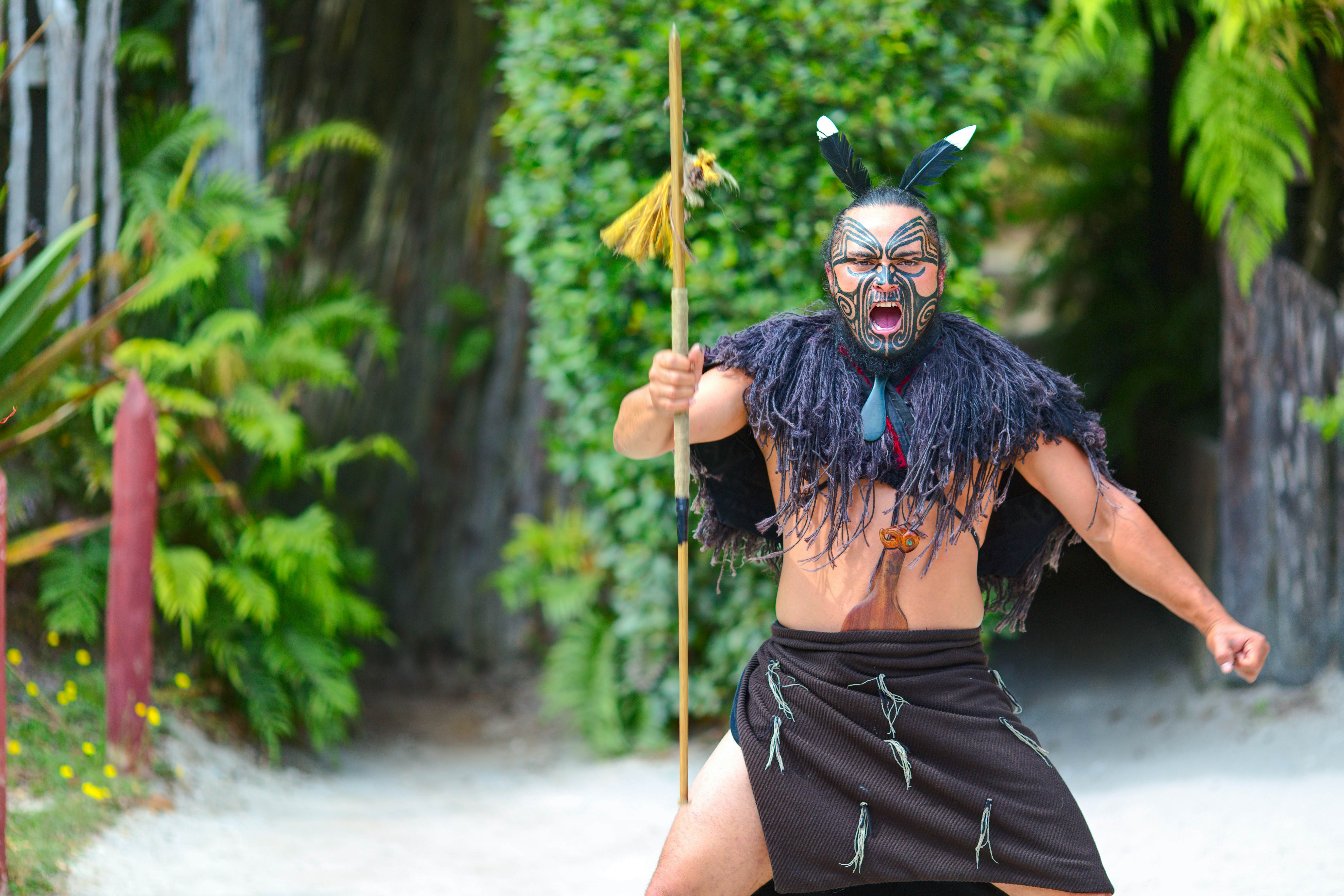 A Maori man gives a traditional greeting at a show near Rotorua town, New Zealand.
A Maori man gives a traditional greeting at a show near Rotorua town, New Zealand.
3. What Are More Ways to Experience Māori Culture in New Zealand?
Māori culture is diverse, with various iwi (tribes) and hapū (subtribes) each having unique practices and traditions. Experiencing multiple Maori tourism operators will enrich your understanding and appreciation. Beyond kapa haka and hāngī, there are numerous ways to engage with te ao Māori during your visit.
Visiting Sites of Historical or Cultural Significance
Northland is historically significant as the landing site for the first Polynesians in Aotearoa, establishing the foundations for Maori society. The area is rich with sites reflecting this long history.
Rangihoua Bay
Located in the Bay of Islands, Rangihoua Bay is the first place where Maori and European families coexisted. This site offers insights into the early interactions between Maori and Pākehā (non-Maori) settlers. It’s free to visit, making it an accessible destination for those interested in historical interactions.
Cape Reinga
Near the northernmost tip of New Zealand, Cape Reinga is where the Pacific Ocean and Tasman Sea meet. This site is spiritually significant to Maori, who believe it is where spirits depart for the afterlife.
Waipoua Forest
Take a detour through Waipoua Forest to see Tāne Mahuta, a giant, 2000-year-old kauri tree named after the forest god. Guided tours are available through Footprints Waipoua, providing deeper insights into the forest’s ecological and cultural significance.
Ruapekapeka
Visit Ruapekapeka, Northland’s most formidable pā (fortified village) during the British conquest. Today, the remains of this impressive earthwork fortress are free to explore.
Ōtuataua Stonefields
Even within Auckland, you can discover Maori heritage at the Ōtuataua Stonefields, an ancient Maori garden containing the archaeological remains of a historic kainga (village).
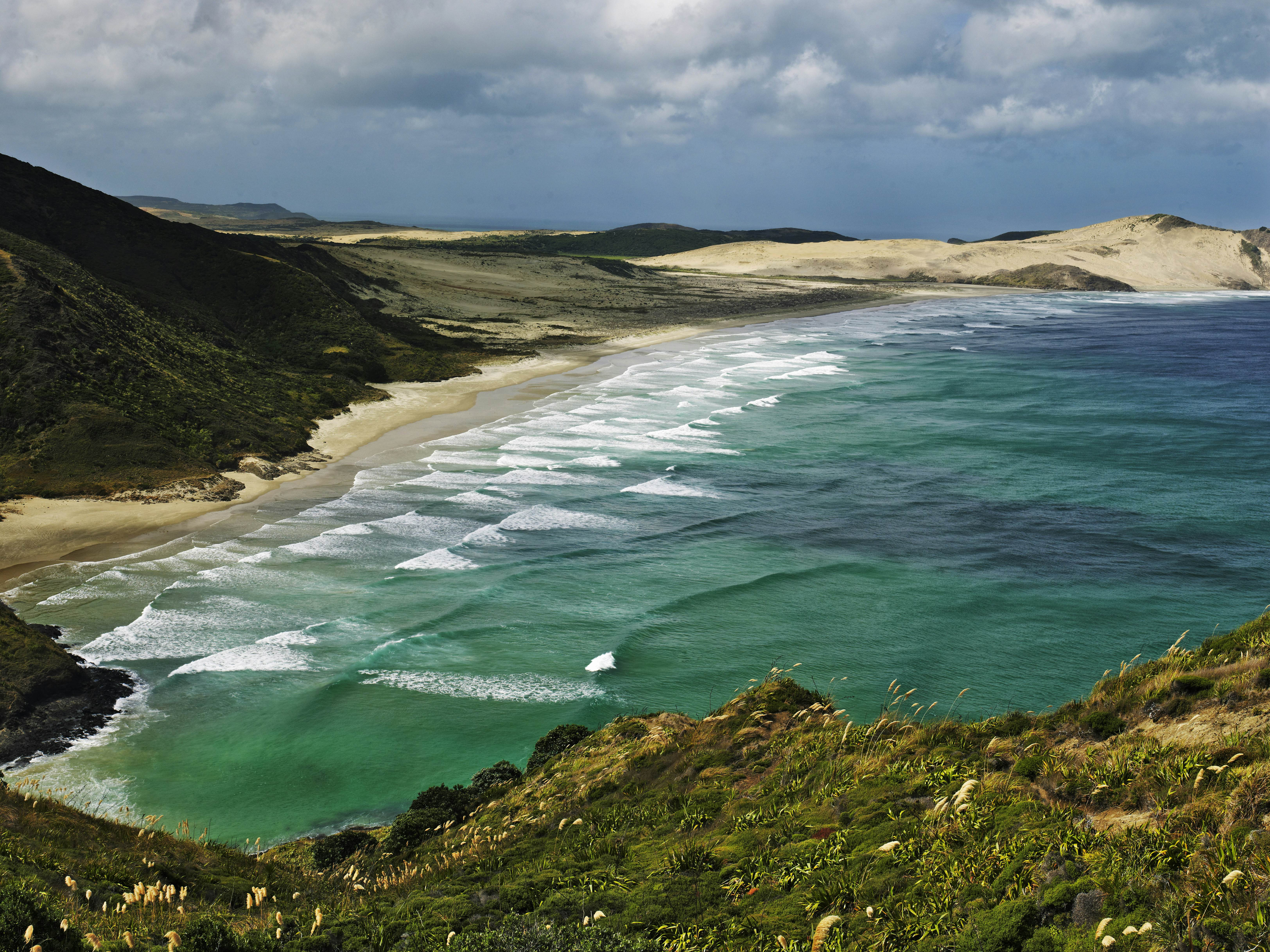 View over Cape Reinga with long beaches and waves.
View over Cape Reinga with long beaches and waves.
4. How Can I Attend a Māori Cultural Festival?
Attending a Maori cultural festival offers a vibrant and immersive experience. Throughout the year, New Zealand hosts various festivals celebrating Maori culture.
Tāmaki Herenga Waka Festival
If you visit during the summer, consider attending the bi-annual Tāmaki Herenga Waka Festival, held over the Auckland Anniversary weekend at the end of January. Celebrations include the opportunity to sail a traditional Maori boat across Auckland’s Waitematā harbor.
ASB Polyfest
Auckland also hosts the ASB Polyfest, showcasing the best Maori and Pasifika performances by school-aged children. Tickets typically cost less than NZ$10, making it an affordable and engaging cultural event. According to the ASB Polyfest official website, this festival is one of the largest of its kind in the world.
MāoriLand Film Festival
The MāoriLand Film Festival promotes new Maori films every March in the small town of Ōtaki, near Wellington. This festival celebrates Maori storytelling and cinematic talent.
Waitangi Day
One of the biggest events of the year is Waitangi Day, commemorated every February to mark the anniversary of the signing of the Treaty of Waitangi. This public holiday is celebrated with events across the country, including at the Treaty grounds in the Bay of Islands. The official Waitangi Treaty Grounds website provides detailed information on the events and activities.
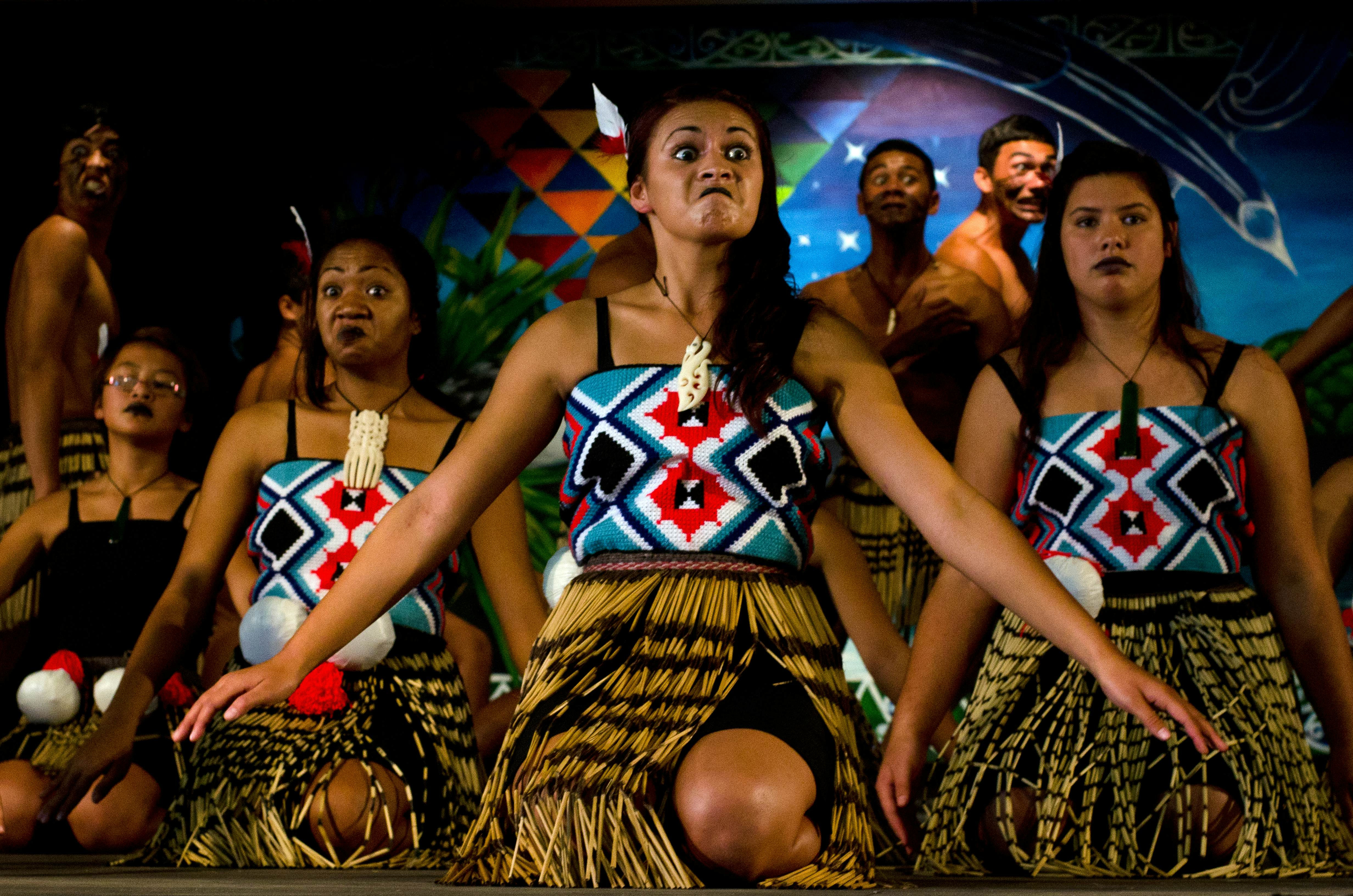 Maori people sing and dance during Waitangi Day celebrations in Waitangi, New Zealand.
Maori people sing and dance during Waitangi Day celebrations in Waitangi, New Zealand.
5. Where Can I Sample Traditional and Contemporary Māori Cuisine?
Sampling traditional and contemporary Maori cuisine is an essential part of experiencing Maori culture. Maori cuisine, known as kai, offers a range of unique and flavorful dishes.
The Hāngī Shop
Located in South Auckland, the Hāngī Shop sells authentic kai, including the traditional hāngī dish, which is cooked in an underground oven. This method gives the food a distinctive smoky flavor.
Other Culinary Spots
Māori cuisine isn’t limited to hāngī. Explore other spots to discover local favorites. According to a study by the New Zealand Institute for Plant & Food Research Limited, traditional Maori foods offer significant nutritional benefits.
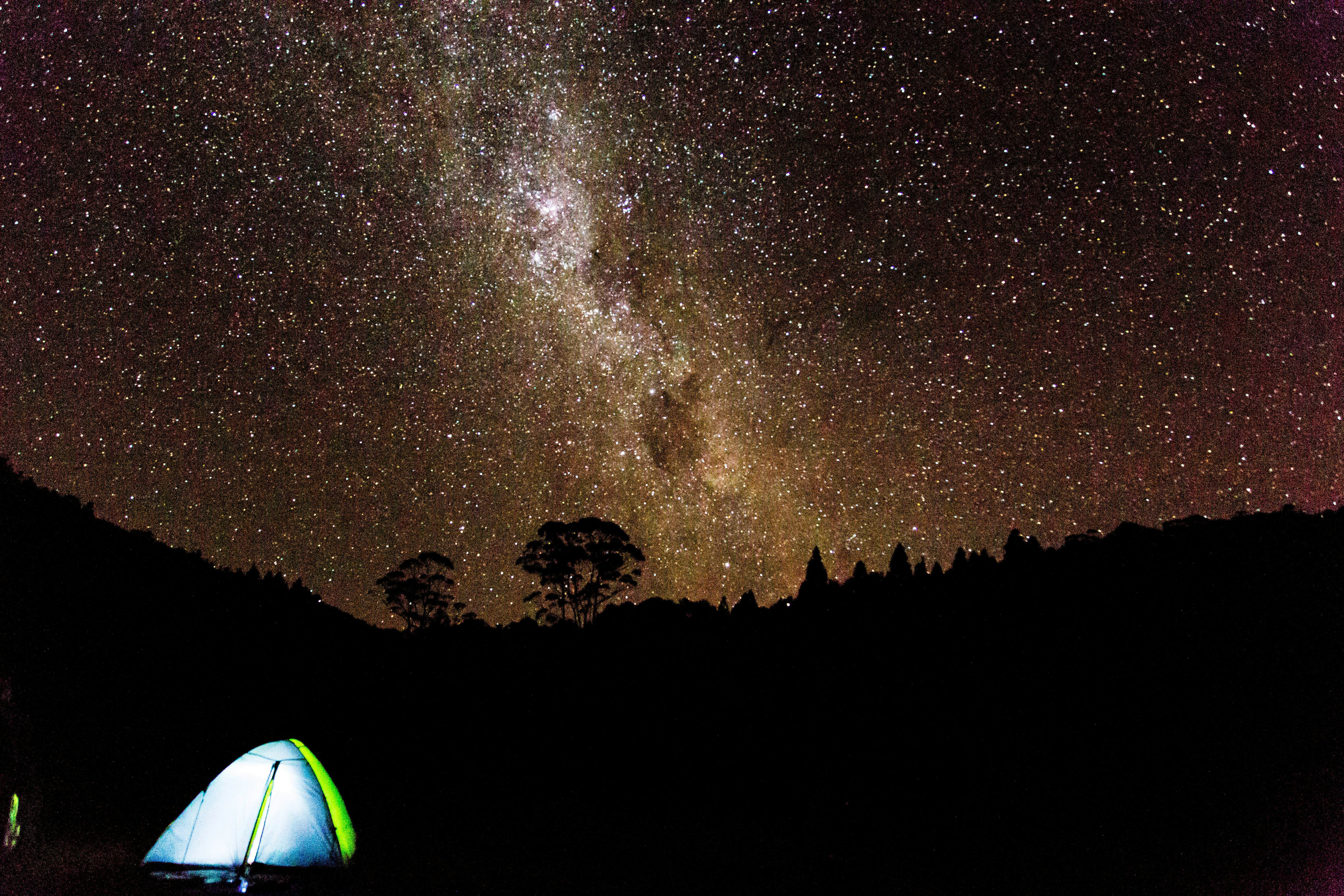 A tent under a brilliant night sky full of stars in New Zealand
A tent under a brilliant night sky full of stars in New Zealand
6. How Can I Experience the Night Sky Through Māori Eyes?
Experiencing the night sky through Maori eyes provides a unique perspective on astronomy and cultural traditions. Maori astronomy is deeply connected to their cultural practices and understanding of the natural world.
Matariki Astronomy Show
If you arrive in Auckland during the Maori new year in June or July, visit the Matariki astronomy show at the Stardome observatory. Matariki is one of three constellations that signifies the coming of the new year, and many events and festivals are held across Aotearoa at this time. The Stardome website provides details on show schedules and events.
Tekapo’s Dark Sky Project
Year-round, Maori astronomy is explained at Tekapo’s Dark Sky Project on the South Island, widely considered one of the world’s best stargazing spots because of the absence of light pollution. According to the International Dark-Sky Association, dark sky tourism is a growing trend, and Tekapo is a prime example of a location that preserves and celebrates natural darkness.
7. What Maori-Led Tours Can I Take in New Zealand?
Taking Maori-led tours offers an immersive way to connect with the environment and culture. A deep connection to the surrounding environment is central to Maori culture.
Kaitiaki Adventures
You can take a guided hike with the Maori-owned Kaitiaki Adventures up 1111m Mount Tarawera, which violently erupted in 1886, destroying several nearby villages. This tour provides both adventure and cultural insights.
Whitewater Rafting
For thrill-seekers, Kaitiaki Adventures also offers whitewater rafting in Rotorua down the Kaituna, Rangitaiki, or Wairoa rivers. These rafting experiences combine adrenaline with Maori cultural narratives.
Waka Abel Tasman
Waka Abel Tasman lets you glide across the pristine seas of a national park at the top of Te Waipounamu, with journeys starting at Kaiteriteri. Paddling in a waka (Maori-style canoe) offers a unique connection to the sea and Maori seafaring traditions.
Te Wharewaka o Poneke
Spend two hours rowing a traditional waka down Wellington’s waterfront with Te Wharewaka o Poneke. This experience provides a hands-on introduction to Maori maritime culture.
 Maori people sing and dance during Waitangi Day celebrations in Waitangi, New Zealand.
Maori people sing and dance during Waitangi Day celebrations in Waitangi, New Zealand.
8. Which New Zealand Museums Should I Visit?
Visiting New Zealand museums is a great way to explore Maori artifacts, exhibitions, and stories. These museums offer comprehensive insights into Maori heritage and culture.
Auckland War Memorial Museum
Auckland’s War Memorial Museum features a fantastic Maori court that includes Hotunui, a magnificent carved meeting house, and Te-Toki-a-Tāpiri, the last surviving great war canoe. The museum’s collection offers a deep dive into Maori art and history.
Museum of New Zealand Te Papa Tongarewa
The Museum of New Zealand Te Papa Tongarewa in Wellington is a must-visit to discover Maori artifacts, exhibitions, and stories. The Karetao-puoro Maori instruments exhibit is particularly memorable. According to the museum’s official website, Te Papa is committed to showcasing Maori culture and heritage.
Te Rau Aroha
Located at the Waitangi Treaty grounds, Te Rau Aroha gives visitors an in-depth understanding of the contribution made by Maori fighting for the British Empire during the Great Wars. This museum provides a unique perspective on Maori involvement in global conflicts.
Whanganui Regional Museum
The Whanganui Regional Museum has great displays and exhibitions in the small town of Whanganui. This museum offers insights into the local Maori history and culture of the region.
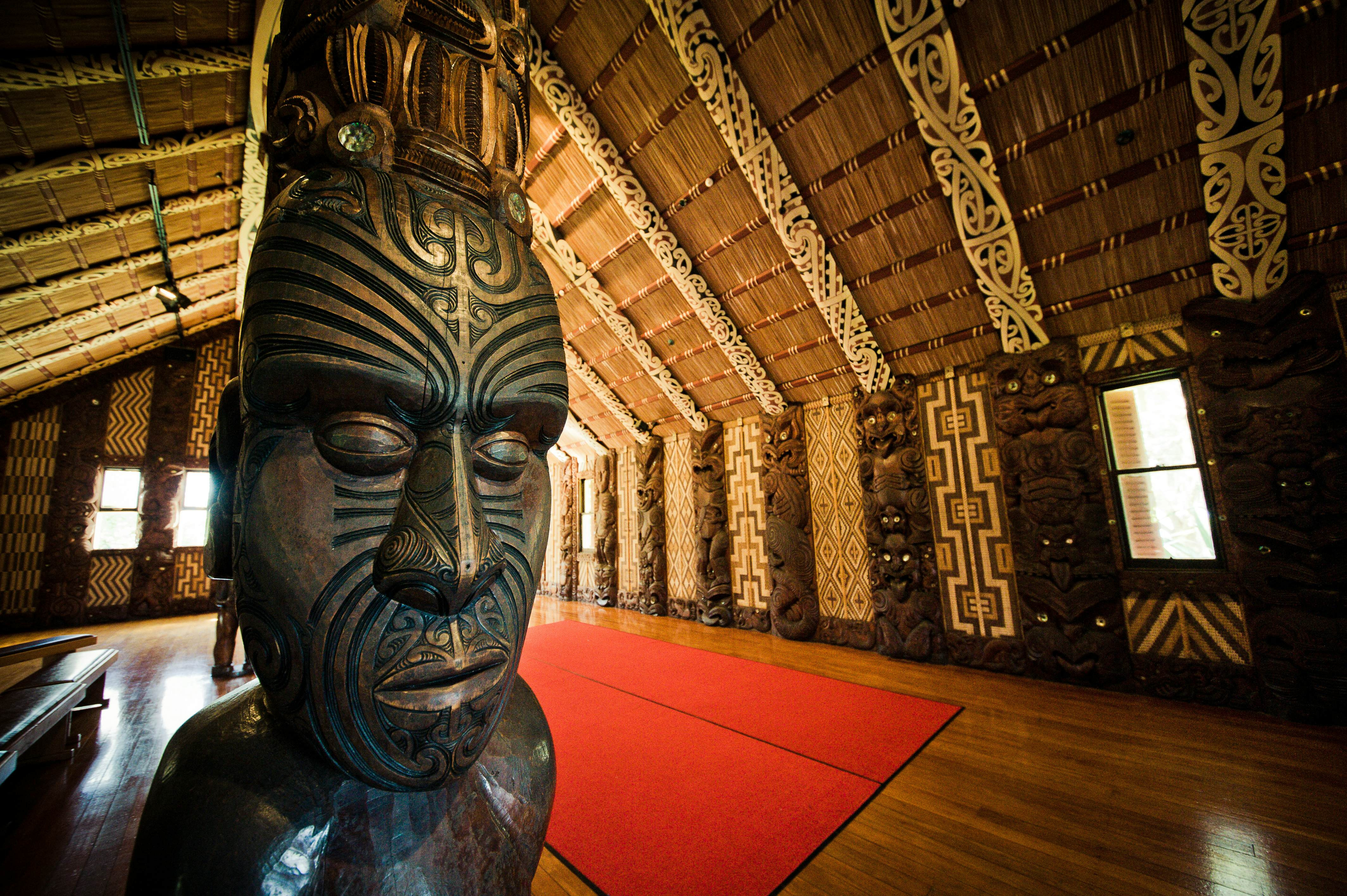 Maori Marae (meeting house) in the Treaty Grounds in Waitangi National Reserve, New Zealand.
Maori Marae (meeting house) in the Treaty Grounds in Waitangi National Reserve, New Zealand.
9. How Can I Visit a Māori Community and What Can I Expect When I Visit a Marae?
Visiting a Maori community and experiencing a marae (ceremonial complex) provides an intimate and respectful cultural encounter. Marae are sacred sites and cultural hubs for Maori communities.
Guided Tours of Marae
Some marae, including those at Whakarewarewa in Rotorua and Te Hana just north of Auckland, offer guided tours to welcome visitors in a tika (culturally appropriate) way. These tours provide an opportunity to learn about Maori customs and traditions.
The Pōwhiri Ceremony
As you approach the marae, your hosts will explain what you should expect, including the steps for the pōwhiri (welcome ceremony) process. The pōwhiri begins with a melodic call from the tāngata whenua (hosts) and a response from the manuhiri (visitors), followed by karakia (blessings), waiata (songs), and whaikōrero (oratory). According to Maori protocol guidelines, this ceremony is conducted in te reo Māori (the Maori language).
Cultural Protocol Inside the Wharenui
After the ceremony, you may be invited into the wharenui (carved meeting house). Before you step inside, it’s important to keep cultural protocol in mind. Take off your shoes and turn off your phone before heading indoors, and only take photos inside the wharenui if you have permission to do so. If food or drink is served at a marae, it should only be consumed after a blessing and shouldn’t be taken inside the wharenui. Finally, avoid sitting on tables in the marae or anywhere else, as it’s considered offensive.
10. How Else Can I Demonstrate Respect Towards the Māori Culture and People?
Demonstrating respect towards Maori culture and people involves understanding and adhering to certain cultural practices and values. Showing respect enhances your experience and contributes to the preservation of Maori heritage.
Respect for the Natural Environment
Maori view the natural environment of Aotearoa as living ancestral deities, so it’s essential to treat nature with respect. Follow the Tiaki Promise for best practices on how to help preserve and protect the country’s environment, culture, and people as a tourist.
Learning the Reo (Language)
Another way to demonstrate respect towards Maori culture is to learn some of their reo (language). Maori consider te reo Māori to be their foremost cultural treasure, and learning simple words and phrases will bring a smile to the faces of Maori you meet during your visit. As a general rule, the language is pronounced with soft vowel sounds, similar to Romance languages, but with rolled “Rs,” and words tend to flow together without noticeable gaps.
Useful Phrases
The most common way to say hello is “kia ora,” which is also a way to say thank you. In the morning, you might say “mōrena” or “ata mārie” to greet someone. To say “goodbye,” you can say “mā te wā” (“see you later”). When you leave Aotearoa, saying “ka kite anō” (“see you again”) shows your hope to return.
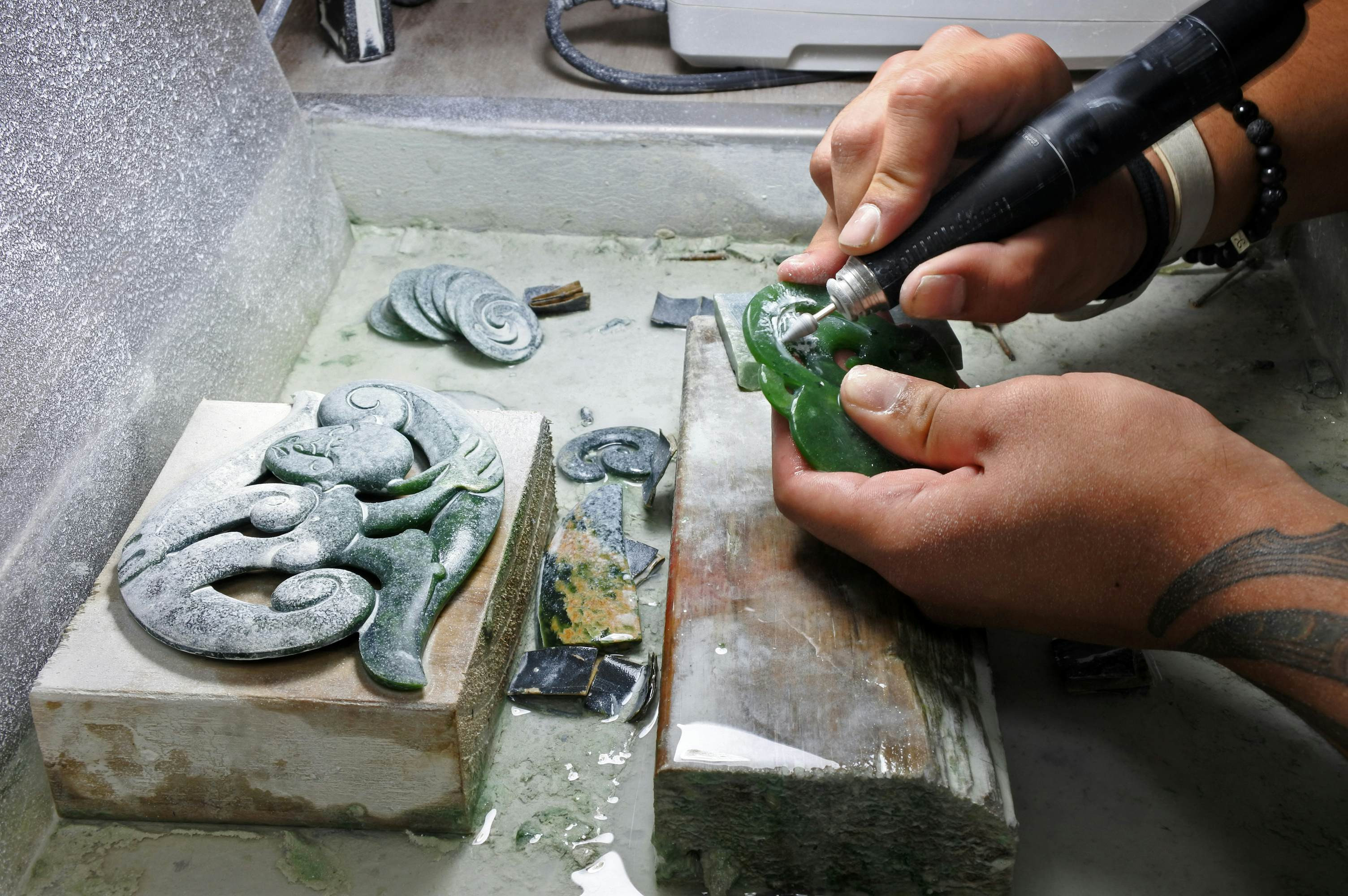 Hands of a man carving Jade ornaments in New Zealand
Hands of a man carving Jade ornaments in New Zealand
SIXT.VN: Your Gateway to Maori Culture Tourism
Planning your journey to experience Maori culture can be seamless with SIXT.VN. We offer:
- Expert travel consultation: Tailored advice to match your interests and schedule.
- Convenient airport transfers: Safe and reliable transportation to start your adventure.
- Accommodation: Various options that cater to your budget and location preferences.
- Bookings for cultural tours: We provide entry to New Zealand’s most famous attractions.
- Flight assistance: With the greatest flight itineraries to choose from.
SIXT.VN will remove all your travel concerns, so you can immerse yourself in Maori culture with confidence.
Ready to embark on an enriching Maori cultural journey? Contact SIXT.VN today.
Address: 260 Cau Giay, Hanoi, Vietnam
Hotline/Whatsapp: +84 986 244 358
Website: SIXT.VN
FAQ About Maori Culture Tourism
1. What is Maori culture tourism?
Maori culture tourism involves visiting sites, participating in activities, and learning about the traditions, history, and values of the Maori people, the indigenous people of New Zealand. It offers a way to experience Maori heritage firsthand.
2. What are some must-see attractions for Maori culture tourism?
Must-see attractions include the Waitangi Treaty Grounds, Rotorua’s geothermal areas and cultural villages, Cape Reinga, and various museums such as the Auckland War Memorial Museum and Te Papa in Wellington.
3. How can I find authentic Maori cultural experiences?
Look for Maori-owned and operated tourism businesses. These often provide more authentic and respectful cultural experiences. Websites like Tourism New Zealand and Maori Tourism offer listings of accredited operators.
4. Is it necessary to book Maori cultural tours in advance?
Booking in advance is highly recommended, especially during peak tourist seasons, to ensure availability and to respect the cultural operators’ planning needs.
5. What should I wear when visiting a marae?
Dress respectfully by wearing modest clothing. Avoid wearing shorts, sleeveless shirts, or revealing outfits. It’s also customary to remove your shoes before entering the wharenui.
6. Can I take photos during Maori cultural performances or ceremonies?
Always ask for permission before taking photos or videos, especially during ceremonies or inside sacred sites. Some events may have specific rules regarding photography.
7. What are some basic Maori phrases I should learn?
Some basic phrases include “kia ora” (hello/thank you), “mōrena” (good morning), “mā te wā” (goodbye), and “ka kite anō” (see you again). Learning these phrases shows respect and appreciation for the Maori language.
8. How can I ensure my tourism activities are sustainable and respectful?
Follow the Tiaki Promise, which provides guidelines for responsible tourism in New Zealand. Choose eco-friendly and culturally sensitive tour operators, and always respect local customs and traditions.
9. What is the significance of the hāngī?
The hāngī is a traditional Maori cooking method using an underground oven. It is significant because it represents a communal way of preparing food and is often used for special occasions and gatherings.
10. What is the best time of year to experience Maori culture in New Zealand?
Maori cultural experiences are available year-round, but specific events like Waitangi Day in February and Matariki (Maori New Year) in June/July offer unique opportunities for cultural immersion.



